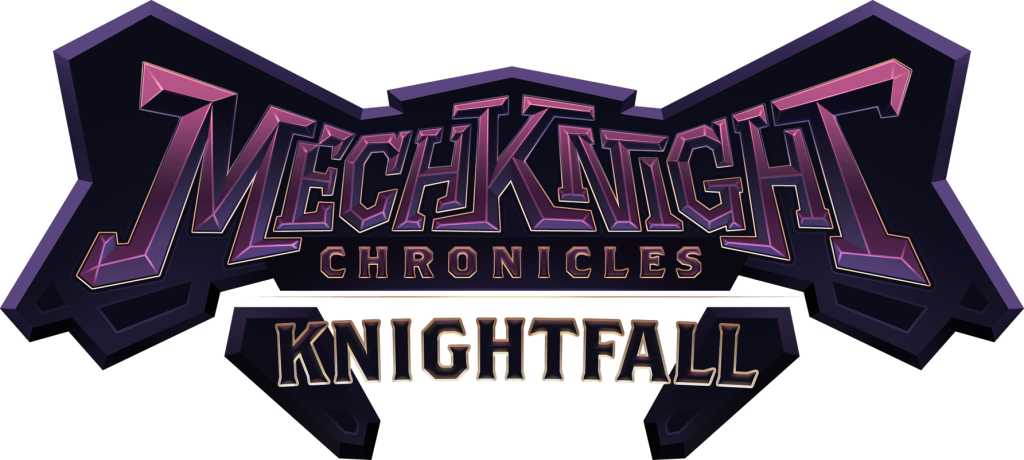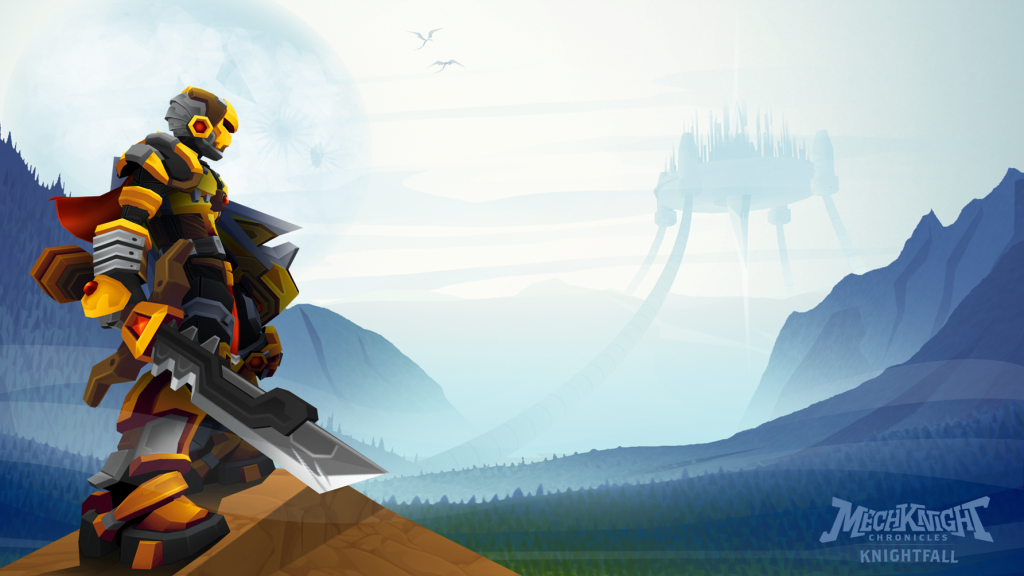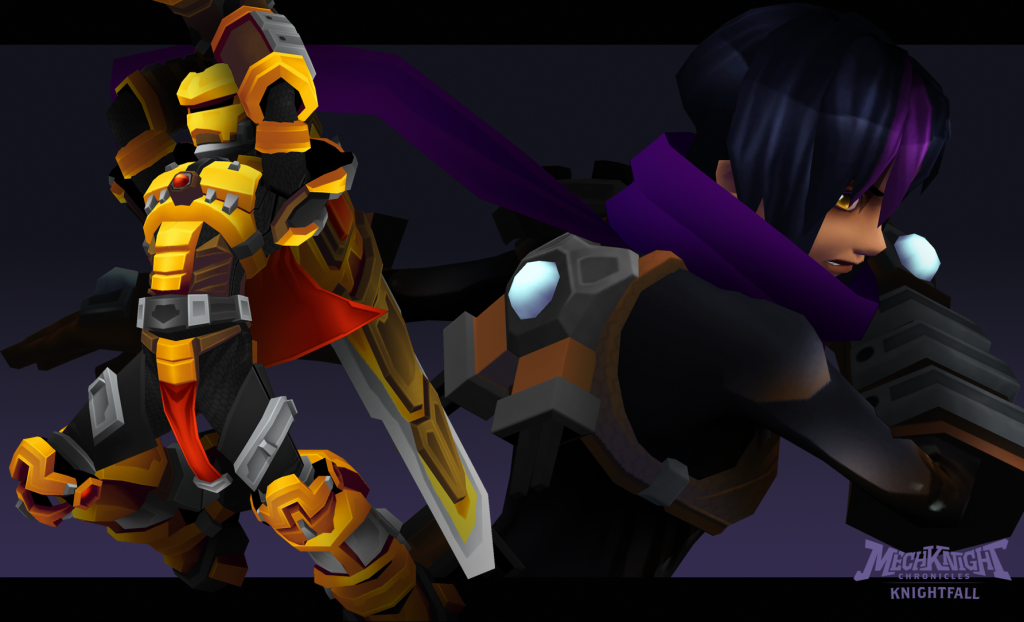Dinosaur Entertainment’s MechKnight Chronicles impressed me greatly. Joe Soliz, the man at the booth, was carrying a giant a robotic sword – that’s pretty awesome in and of itself. Unfortunately, the booth was so popular that I was unable to actually play the game at the show, so boo-hoo to that. However, thanks to a little PR on my part, I procured a copy of the pre-alpha demo from PAX East, and I’ve played it extensively with the time and care it deserves. Why? Because I see it as a new iteration in a long tradition of great arcade games, and probably the first time I’ve been excited for the style in a while. 2 Thessalonians 2 says:
13 But we should always give thanks to God for you, brethren beloved by the Lord, because God has chosen you from the beginning for salvation through sanctification by the Spirit and faith in the truth. 14 It was for this He called you through our gospel, that you may gain the glory of our Lord Jesus Christ. 15 So then, brethren, stand firm and hold to the traditions which you were taught, whether by word of mouth or by letter from us.
An adherence to tradition can, in the realm of video games, helps us see what worked and what did not. It’s a little known, yet often cited fact that the Apostle Paul was a Pharisee. In a word, he was a man who studied and devoted his life to tradition. Thus, when he became the first Christian missionary of renown, this also became his new goal: to form a new tradition in the vein of the old. Our ancestors and predecessors have much to teach if, if we’ll listen. We take what works and throw away the parts that do not (in the Christian case, the legalism vs. grace, but obviously applicable in a number of spheres).
What does this have to do with video games? I think Dinosaur Entertainment is doing a brilliant job at following tradition in their chosen genre. For an incomplete game/conceptual demo or whatever you want to call it, MechKnight Chronicles succeeds brilliantly at copying its influences. Think of it as a combination of different beat’em ups released over the span of the sub-genre. Treasure’s Guardian Heroes, for example, definitely plays into the game’s style with the utter insanity on screen at any one time. Obviously, the wide playing field (absent from Guardian Heroes) doesn’t make things quite as intense, but MechKnight ratchets this up with the sheer number of enemies rather than close quarters.
The old Dungeon & Dragons sidescrolling arcade brawlers from Capcom (Tower of Doom and Shadows of Mystara, for those that doubt my street cred) seem like rather obvious influences as well. Per the D&D association, each of them tried to combine the action Capcom did best in the 1990s arcades while also adding what we now call “RPG elements” – literally, just statistics attached onto your attacks. People really like higher numbers, though, and these became successes on that standard at least (personally, I don’t understand the use for that particular abstraction and upgrade systems, but that’s an article for a different day – it works in the D&D style, so I guess I can let it pass). Even then, the unique “sword and sorcery” setting showed we didn’t just need to have big and ripped thugs beating each other up on the streets of Fictional City X. King of Dragons and Knights of the Round were merely the predessors to that styles, and they did it well (and crazily) enough. In addition, these D&D games made the multiple paths mechanic an actual decision rather than an arbitrary change-up – there’s a big difference between “cave” and “river”, and the excellent 2D graphics made this clear. Plus, Capcom made attempts to integrate a story (told in the “ye are a hero and you do X” sort of thing with choices and such) which added some new and untapped potential in the genre.
Cue in some of the more recent “brawlers”, so called, that came out of the now-prolific downloadable game scene. Castle Crashers from The Behemoth reinvigorated the genre through 4 player co-op and upgrade systems, if not a plot; Scott Pilgrim’s recent downloadable title does much the same. MechKnight follows in that tradition, yet I think there’s potential here for something more. Does it borrow individual elements from each? Not quite, though it certainly shares an aesthetic similarity with a bit of steampunk layered on top. Rather, it’s more like a spiritual sequel to those games than anything else.
First, I think the element that really changes the combat comes from the ability to block and dash. Most brawlers simply refuse to give you either of these options – much of your skill, therefore, comes into play by spatial awareness and avoiding pincer-like situations. You know the drill – getting surrounded and finding yourself unable to escape until you die was never fun in the arcades. Even if players called it cheap, the best rose above those constraints by being aware of enemy attacks, range, makeups, and patterns to avoid those situations. MechKnight, instead, molds itself more in the vein of the more recent Ninja Gaiden reboots with dodging and dial-a-combos. Most brawlers require you to press the same button over and over again, but MechKnight knows that variety should come into play. Analyzing enemy attacks, and then making a last minute dodge, looks to be a desired and useful tactic, and I found myself finding the perfect timing for causing the maximum damage while remaining safe. The variety in combos means you’ll spend a great deal of time experimenting, and isn’t that the fun part?
When the game (which, from the enemy numbers thrown at me, looks designed for a co-op experience) presents you with so many different enemies and so many variations of the same, it requires some quick thinking to prevent your death. As per a PAX demo, it’s not as if you run out of lives or anything, though I imagine this will change in the final game; I played as if I would have multiple lives just to simulate as such. Once the enemies spawn, evaluate the situation quickly and get to work. The combo system, at least from what I saw, needs a bit of work – it’s difficult to tell which ones hit a wide area, and which ones do not. Some attacks definitely have too long a recovery period for their relative use (jumping hard attack, for example), but as a pre-alpha I didn’t find myself relying too heavily on any one combo – just figuring them out was a joy in itself. Did I mention air juggling? That’s awesome by default! I’m not sure if this was intended either, but the game allows you to turn around near instantly, meaning you can continually brings enemies without shields into stunlock (and even those with shields into stun also!). Still, some enemies will overpower your guard so it’s never too overpowered (way to repeat myself).
Lastly, there’s the magic system that takes some liberties with the inspirations listed above. You have four (count’em) magic attacks which you can quickly select by using the right analog stick (hopefully you’re playing this on a normal controller of the modern era. I would like to play it on an arcade stick, but oh well!). You’ve got your typical screen clears (left) and magic attacks (right), as well as the ability to augment your attack (up) and defense (down). I’ve played around with them all, and still find the screen clearing attack (common to games like this) too useful! It doesn’t have range and just wipes the screen clean. As you have five bars of magic (regenerated by blue potions; health by green, which seemed pretty obvious and color coded), you’ve got a lot of room to play with these abilities.
As for characters? Well, there’s a planned ten, but for now we have default warrior archetype and default long-ranged ninja archetype. I had a much easier time with the latter than the former, primarily because the long-range combos were simply too good; not that throwing kunai everywhere is a bad thing, but it obviously needs some work. The yellow-suited MechKnight echoes those game previously mentioned the best, so start with him if you want something akin to the real experience.
So what does this add up to? A game I want to play really bad (and especially co-op). There’s the makings of a great game in here that takes advantage of a stellar past. I like seeing and identifiying all the little nuances and seeing how Dinosaur Entertainment hearkens to the past while upping the ante. What I’m hoping for in the end is a balance between the “RPG elements” and the skill required to win and succeed (like in the D&D games, for example). In other words, an adherence to traditions while fixing the elements that didn’t work in those game (notably, hitstuns and knockdowns that made for some frustrating play). The modern versions (like Castle Crashers), because they lack the constraints of the arcade scene like extra lives, quickly devolve into senseless grinding if not limited in some fashion. That’s why they worked in the first place – they challenged people in unorthodox ways, and weren’t just there to make you mash buttons. That’d be my only possible complaint, but so far MechKnight Chronicles looks like a game that deserves its spot in the sun. It remembers its pedigree, and the influences on it should show Dinosaur Entertainment as a competent successor to those classics.



